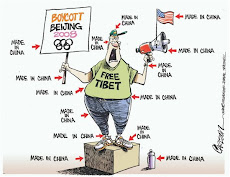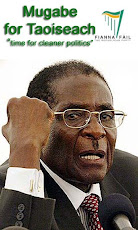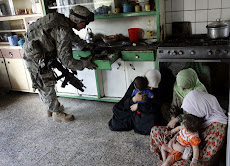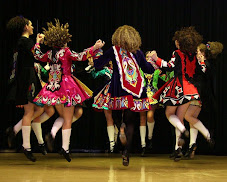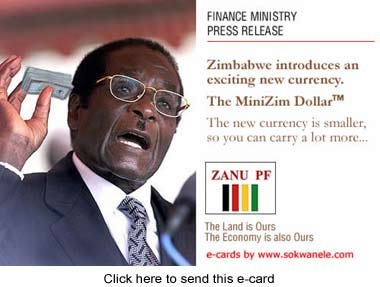

KEEKOROK, Kenya: March 1st. (NY Times) — Nancy Holan just had the safari of her life. She and a friend flew to Kenya from Detroit and as they cruised the wide open plains, they had the lions, zebras and elephants all to themselves. "It was wonderful," she said. Not far away, Isaac Rotich, a high-end safari guide, paced an empty game lodge in freshly polished safari boots. He can spot a six-inch lizard 50 feet away, and tell you the name — in Kiswahili, English and Latin — of the plant it is sitting on. He has spent years building this career and was making $30,000 a year, a king’s ransom in these parts. Now he is afraid of losing it all. “We’re hurting, big time,” Mr. Rotich said. This is what Kenya’s legendary safari business has become: wonderful for tourists, disastrous for just about everyone else.
Tourism is one of Kenya’s biggest industries, but the violence that exploded after a flawed election in December has eviscerated the business, with bookings down 80 to 90 percent in most areas. Even after a peace deal was signed Thursday, government and tourism officials worried that it could take months — if not years — to recover. Kenya’s rival politicians have agreed to share power, and on Friday many people here praised them for finally calming the country down. But the long-term economic consequences are just beginning to sink in. “We will work very hard to see what we can salvage,” said Rose Musonye Kwena, an official at the Kenya Tourist Board, who estimated that even if there was no more major violence this year business would still be down 50 percent. The images of machete-wielding mobs caused a tourist stampede, and the lingering uncertainty over the country’s direction has caused a wave of cancellations, leaving dozens of hotels closed and thousands of guides, drivers, cooks, waiters, masseuses, wood carvers and bead stringers out of work. Many of them support a vast network of relatives. A continued tourism meltdown could push millions of Kenyans toward poverty, which was one of the underlying causes of the violence in the first place. The downturn also threatens to reverse the momentum that Kenya has made in recent years to protect land and animals. Government officials are worried about out-of-work guides and trackers poaching game. Village elders in animal-rich areas who had been persuaded that conservation and tourism would be profitable have been re-examining this equation and considering selling off their land. Sales mean farms, and farms mean fences, which could block the millions of zebra, wildebeest and antelope that migrate across the famous Masai Mara game reserve each year, possibly endangering one of the most spectacular gatherings of animal life on the planet. “It’s absolutely catastrophic,” said Calvin Cottar, the owner of an upscale safari camp.
Kenya’s billion-dollar tourism industry, which injects critically needed foreign exchange into the economy, is hardly the only victim. The election crisis, which started when Kenya’s election commission declared the incumbent president, Mwai Kibaki, the winner of a closely contested race, despite widespread evidence of vote rigging, has killed more than 1,000 people and balkanized Kenya, with hundreds of thousands fleeing their homes and resettling in ethnically homogenous zones. The violence punched a hole through the economy, disrupting coffee and tea production, knocking down the stock market’s value and bruising transport, manufacturing, construction and nearly every other industry — except maybe the funeral trade. Tourism could take among the longest to bounce back, because it is especially sensitive to perceptions, and the well-publicized bloodshed of the past two months has badly dented Kenya’s image. Last year, the country had more than two million tourists. In January, there were only 55,000 new arrivals, well below projections. The truth is that most of the violence has subsided and it never really touched the tourist areas, like the Masai Mara.
But many Western governments seem to think otherwise. Australia is still warning its citizens traveling to Kenya to stay indoors, not exactly the greatest plug for game watching. “These warnings are a real problem for us,” Mr. Cottar said. Even if the game lodges have been perfectly safe, he said, people have not wanted to come to Kenya if they think “they will be drinking Champagne while somebody is getting hacked to death over the hill.” His resort is as good an example as any. Cottars 1920s Mara Safari Camp is one of the most luxurious lodges in Kenya, charging up to $710 a night per person, and is usually booked solid at this time of year. Now it is deserted. It is nestled in an especially picturesque corner of the Masai Mara, overlooking the green hills of Africa that inspired Ernest Hemingway and so many others. The lodge plays up the old-school theme, decked out with leather trunks, brass telescopes and pith helmets. On Sunday, the only guests were a couple from Kenya who paid cut-rate local prices, which allow the lodges to stay open — but just barely. The couple, James and Lel Cartwright, arrived in their own plane. For once, the air over the Masai Mara was clear as glass. “It was stunning,” Mrs. Cartwright said. “There’s usually a wall of dust from all the minibuses.” The staff at Cottars threw on their fezzes and best smiles. But underneath they seemed down. Their salaries have been halved. The tips have dried up. Daniel Lanke, a waiter at Cottars, just enrolled his ninth child in private school but now, he said, “I can’t even buy him socks.” In the villages around the lodge, it is the same story. At the sound of a truck, Masai women dash in from the fields and set up tables full of souvenirs. Some have not sold a necklace for months. “We are going to go hungry,” said one woman, Nalarame Noloswesh, who has seven children.
Many lodges have teamed up with local communities, sharing a slice of their profits in exchange for using the communities’ land. The whole point was to make tourism more profitable than agriculture, so villagers would have an incentive to set aside their land for animals. Kenya’s tourism officials seem to appreciate the stakes. They are planning to begin a huge marketing campaign to reassure potential visitors that Kenya is safe. Mr. Cottar says that he will donate some of his proceeds to the Kenyan Red Cross to emphasize that “if you go on safari now, you’ll be helping the country.” But those with the means may not wait. Mr. Rotich, the safari guide, is fully aware of his skills. He is an expert game spotter, speaks impeccable English and seems genuinely interested in every form of life on the veldt, from the towering giraffe to the lowly dung beetle. “This is all I know,” he said. The other day, he found a herd of 150 elephants eating grass in a clearing. Babies wrestled with one another as their enormous mothers lumbered past. The elephant train was headed south to Tanzania, where the safari industry is booming because many tourists are flocking there instead. Mr. Rotich said he might join them. “I love Kenya,” he said. “But I have my dreams.”
by Jeffrey Gettleman
+++++++++++++++++++++++++++++++++++++++++++++++++++
Disclaimer
No responsibility or liability shall attach itself to either myself or to the blogspot ‘Mozlink’ for any or all of the articles/images placed here. The placing of an article does not necessarily imply that I agree or accept the contents of the article as being necessarily factual in theology, dogma or otherwise.
Mozlink









